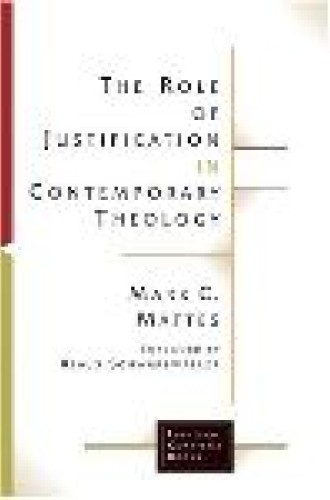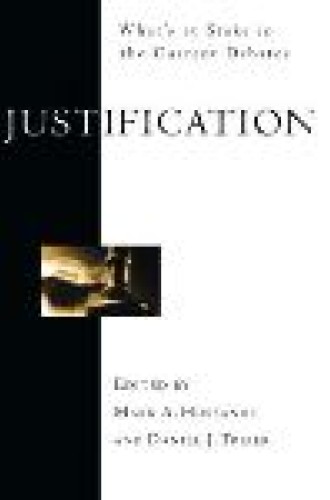Setting it right
When Paul speaks of God “justifying” the “ungodly” Abraham when he believed God, Paul does not mean that Abraham was morally “wicked.”
Two millennia ago the risen Jesus Christ invaded the world of a Jewish rabbi named Paul, destroyed the cosmic order as he knew it, incorporated him into a “new creation” and conscripted him for a mission that extended throughout the Roman Empire and to the ends of the earth. For Paul the crucifixion, resurrection and exaltation of Jesus Christ was God’s decisive apocalyptic act of delivering the cosmos and humanity from enslaving powers. It brought into being a whole new order of things, the shape of which is given in the life, death and resurrection of Jesus himself, and the power of which is given in the outpouring of the Holy Spirit.
Paul’s proclamation of God’s apocalypse in Christ and the Spirit created communities of faithful comrades (“brothers and sisters”) called to a life of harmonious solidarity. The ancient divisions and enmities between Jew and gentile (the “righteous” and the “unrighteous”), powerful and weak, slave and free, male and female, were destroyed by God’s act of justice in Jesus. God’s right-making power was alive and on the move among the nations. To these God-created communities Paul wrote letters in which he reiterated the good news of God’s justice and power in Christ, and instructed the members in a way of life commensurate with that news.
At times in those letters Paul spoke of the cosmic-apocalyptic, world-destroying and world-creating act of God in Christ as dikaiosis, meaning “rectification” or “justification.” This word summed up the way in which God’s power was at work setting right and transforming all created relationships. Most specifically, it summed up how God through Christ was reaching out, astonishingly, even to the gentiles, conquering the idols and powers which enslaved them and establishing covenant with them, apart from the works of Torah, as he once did with Abraham and Sarah long ago.
The foregoing rendition of Paul’s gospel of justification might sound odd to Protestants for whom justification by faith is the doctrine about how God sets individual sinners right with God as they put their faith in Jesus. Their sins are atoned through the death of Christ, who took those sins upon himself, and therefore God “reckons” or “imputes” righteousness to sinners as a kind of forensic or legal judgment. Thus they stand in faith before the righteous God not weighed down with their sins, which would merit God’s wrath, but clothed in the righteousness of Christ, and therein they are recipients of God’s favor.
This understanding of justification has held sway in Protestant theology since the time of Luther. In many respects it continues to be the hallmark and touchstone of Protestant faith. It also remains a core assumption of each of the books reviewed here, even if some of the authors would like to correct, complement or complete it with other understandings.
Tuomo Mannermaa and Veli-Matti Kärkkäinen represent the Finnish school of Luther interpretation, a movement which began in ecumenical conversations between Lutherans and Russian Orthodox (the two main denominations in Finland). Mannermaa, emeritus professor at the University of Helsinki, is the key figure in this movement, and Christ Present in Faith (which appeared in German in 1989) lays out its fundamental argument.
Mannermaa is convinced that Luther’s theology of justification is not as exclusively forensic, juridical, imputational and transactional as it has traditionally been understood. According to Mannermaa, Luther believed that Christ is really and personally (“ontically”) present in the believer in faith, and that the believer in turn really (ontically) participates by faith in the person and work of Jesus Christ. And that, according to Mannermaa, is precisely the meaning of justification for Luther: “The Christ who dwells in faith in Christians is the Christian righteousness that God imputes to them” (emphasis in the original).
Mannermaa’s further point is that this mutual indwelling and participation of Christ and the believer, which is the very meaning of justification for Luther, is strikingly close to the Orthodox understanding of theosis or divinization, the doctrine that the Christian is saved by being incorporated into Christ’s humanity, joined to his divinity and made a sharer in God’s own triune life. The text of 2 Peter 1:4 (“and [you] may become participants of the divine nature”) is at the heart of the Orthodox doctrine of theosis. Mannermaa shows that Luther made use of that text at some critical junctures. On the basis of extensive quotations from Luther, Mannermaa draws the Reformer’s doctrine of justification and the Orthodox doctrine of theosis into the closest possible harmony, thoroughly absorbing the forensic aspect of justification into a theology of ontic participation.
Mannermaa’s revolutionary argument is increasingly (though by no means universally) accepted among North American Lutheran theologians, most notably by Robert Jenson in his Systematic Theology (particularly volume 2). The publication in English of Christ Present in Faith is sure to extend that acceptance, as well as to stimulate vigorous argument.
The great service of the slim volume by Veli-Matti Kärkkäinen, professor of systematic theology at Fuller Theological Seminary, is to introduce the work of the Finnish school and to propose that “salvation as deification and justification” is a crucial contribution to ecumenical discussions not only between Lutherans and Orthodox but also between Eastern and Western theologies. In fact, Kärkkäinen suggests that deification is also an important theme in the Anabaptist, Methodist and evangelical traditions. Whether or not that argument is persuasive, Kärkkäinen fills in some valuable pieces of the justification-as-deification puzzle by providing a very helpful chapter on the doctrine of deification in the Eastern Orthodox tradition.
The Finnish school is not without its critics. For Mark C. Mattes, professor of philosophy and religion at Grand View College in Des Moines, Luther’s doctrine of justification is the key critical principle for all theological activity: “The doctrine of justification is the critical point that shapes other doctrines and practices.” Mattes puts the doctrine of justification to use in just this way, employing it in a critique of the theologies of Eberhard Jüngel, Jürgen Moltmann, Wolfhart Pannenberg, Robert Jenson and Oswald Bayer. Jüngel, Moltmann and Pannenberg in particular are judged (rightly, to my mind) to have accommodated themselves too deeply to post-Kantian philosophy, Hegelianism especially, and to have been too ready to meet secular modernity on its own terms through various versions of what Mattes characterizes as “natural theology.” Mattes detects these weaknesses most evidently in their respective doctrines of justification, read against his own version of Luther’s doctrine. (I was left wondering, however, whether the same criticisms might be made by employing another critical principle.)
Jenson fares much better, yet Mattes is also critical of (among other things) Jenson’s recent turn toward Mannermaa. The Finnish emphasis on mutual indwelling and participation “jeopardizes the centrality and objectivity of the ‘external word’ (verbum externum), God’s means to comfort anxious consciences threatened by the accusatory function of the law.” For Mattes, the doctrine of union with God must be subordinate to the doctrine of justification.
The hero of Mattes’s story is Bayer, a professor at Tübingen University whose works are largely unknown in North America because few have been translated (although Living by Faith: Justification and Sanctification recently appeared in translation in the same Eerdmans series as Mattes’s book). In Bayer’s theology of justification, with its proper dialectic of law and gospel, Mattes detects the possibility of a truly critical, nonaccommodationist engagement of culture, a full affirmation of creation as God’s address, and an appropriate account of the relationship between justification understood in forensic terms and justification understood as human transformation.
One could get the impression that recent concern over the doctrine of justification is pretty much a Lutheran thing. The volume edited by Mark Husbands and Donald Treier shows otherwise, collecting essays from Baptist, Roman Catholic, Reformed, Wesleyan and evangelical scholars who gathered at Wheaton College for a conference on the theme in 2003. The only essay by a Lutheran, Robert Kolb’s, gives a valuable survey of recent Lutheran theology on justification, although it gives only passing mention to the Finnish school. A number of other essays treat the doctrine of justification in historic traditions (e.g., Wesleyan) or at key historic moments in its history (e.g., the Regensburg Colloquy, at which Protestant and Catholic theologians produced a statement of agreement on justification—in 1541!). Some of the essays examine the doctrine in the work of various recent theologians: Philip Ziegler has a fine essay on Paul Lehmann, and Paul Molnar examines the doctrine in Barth, Rahner and the 1999 joint Lutheran and Catholic declaration on justification.
The best and boldest essay is by Bruce L. McCormack, who breaks new ground in an effort to think through the relation of God’s action and human action in justification by proposing a “covenant ontology,” an attempt to say what is “essentially” human. “What we are essentially is a divine act which establishes a covenantal relation—a relation which perdures and makes us to be what we are even when, in our perversity, we choose to live on the basis of a lie rather than the truth. . . . The faith and obedience by means of which my humanity conforms to the humanity of Jesus Christ is the effect of the divine declaration given in the justification of the ungodly. . . . At its heart, forensicism is deeply ontological.”
While McCormack does not discuss the Finnish school, he is clearly proposing his own view as an alternative to it—and his is on more solid Pauline ground.
One might also get the impression that the doctrine of justification begins with Luther, and that the crucial question is how to interpret Luther rather than how to interpret Paul. That certainly seems to be the case for Mannermaa and Mattes. The reader must search for references to Paul, and when they appear they turn out to be little more than proof-texts. Kärkkäinen has a rather sketchy chapter on recent Paul scholarship which ends up having little if any bearing on his subsequent discussion. An extended exegesis of Paul is virtually absent from all four of these books, with the exception of two essays in the collection by Husbands and Treier.
Unfortunately, those two essays, by evangelical scholars Robert Gundry and D. A. Carson, are so thoroughly embedded in the Protestant evangelical understanding of justification as a matter of individual salvation that the reader gets little sense that a revolution has been under way in Pauline studies for 30 years or more. That individualist focus is largely sustained in all the books under review.
According to the “new perspective” in Pauline scholarship—represented in the works of E. P. Sanders, James D. G. Dunn, Terence Donaldson and N. T. Wright—Paul uses the language of justification predominantly in considering how gentiles are incorporated into the Abrahamic people of God. Whereas Jews of Paul’s time would have regarded the Jewish people as the righteous (or the circumcised) and the gentiles as the unrighteous (or the uncircumcised), Paul proclaims that God has “righteoused” (Sanders’s rendition of dikaioo) the gentiles by including them in God’s covenant with Abraham through the death and resurrection of Christ apart from works of Torah. Righteousness and justification in this understanding are not so much moral terms as covenantal terms, having to do with the identity and boundaries of the people of God.
When in Romans 4 Paul speaks of God “justifying” the “ungodly” Abraham when he believed God, Paul does not mean that Abraham was morally “wicked” (as, for example, Carson has it), but that Abraham was still effectively a gentile, uncircumcised, and therefore unrighteous from a Jewish perspective. God counted Abraham’s believing, rather than his circumcision, as covenant-righteousness, and so Abraham is also the father of “righteoused” gentiles who turn from their idols and believe God but are not circumcised.
Though Carson dismisses the new perspective with an anecdote and a couple of footnotes, and the rest of the authors reviewed here ignore it altogether (except Kärkkäinen in a brief chapter), key elements of the new perspective are now widely accepted among Paul scholars, not least among many Lutheran New Testament scholars. While I believe there are some significant limitations to the new perspective, there is no turning back to a pre-Sanders view of Paul.
The outline of Paul’s gospel which I rendered in the opening is partially informed by the new perspective, but is more deeply indebted to the “apocalyptic” interpretation of Paul recently advanced by J. Louis Martyn and others, notably Martinus de Boer and Beverly Roberts Gaventa. Martyn’s commentary on Galatians and essays on Paul set a new standard for the theological interpretation of Paul because of their insistence that Paul’s mission and letters are radically about God and God’s action in Jesus Christ (a point that is sometimes muted by the more sociologically oriented new perspective). Through Jesus Christ, in his faithful life and death on the cross (following Richard Hays and others, I read pistis Iesou Christou as “the faith of Jesus Christ” rather than “faith in Jesus Christ”), and God’s vindication of his faithfulness in the resurrection, God invades the creation (and not just the lives of individual sinners) which has fallen powerfully under the control of the anti-God powers of sin and death and the “principalities and powers” and the “rulers of this age.”
God not only invades the territory occupied by these powers (which is in fact God’s own territory—creation and the nations) but also conquers the powers through the obedience of Christ on the cross. In the cross, and in the people of God, who live by the cross, God inaugurates a new creation, a new space and time in which rectified, restored and renewed human action is called forth. This activity is always cultural, corporate and political in nature. Such is the scope of God’s rectifying justice in Jesus Christ. This understanding of justification challenges and alters the traditional interpretation in fundamental ways. More important, it shines critical gospel light into the regions of culture, politics and the social order.
There are strong hints in this direction in Oswald Bayer, who, according to Mattes’s presentation, explores the social and creational scope of the doctrine. A more promising effort is the work of Paul Lehmann, as exhibited in Ziegler’s essay in the volume by Husbands and Treier. Ziegler cites Lehmann as saying that “the reality of justification transfigures the nature of the boundary between the Christian community and the world.” Lehmann did not have the benefit of the recent scholarship on Paul, but his claim could easily be developed from the way Paul addresses the boundary between the Jewish people of God and the gentile peoples with the doctrine of justification. Ziegler writes: “And so, Lehmann once observed, for evangelical Christians—that is, for Christians who by grace have received the good report that the world-destroying and world-constituting event of justification constitutes the all-encompassing and determinative context of life—all human struggles, including the struggle for a better human justice, ‘derive their significance from the struggle of God.’”
Lehmann—not surprisingly, a colleague and close friend of Martyn at Union Theological Seminary in New York—saw clearly that the doctrine of justification has direct and radical social and political consequences. This dimension of the doctrine of justification, almost wholly neglected in the books reviewed here, needs to move to the center of the discussion of the doctrine “by which the church stands or falls.”






